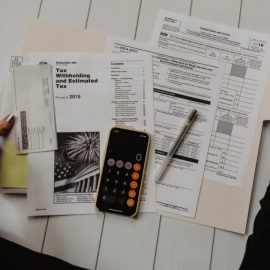
This is a free excerpt from one of Shortform’s Articles. We give you all the important information you need to know about current events and more.
Don't miss out on the whole story. Sign up for a free trial here .
What is drip pricing? What psychological tactics enable the practice? How can regulation curb it?
Drip pricing is a deceptive business practice that advertises a low price, then adds hidden fees at the final payment. US federal agencies are exploring regulatory action against drip pricing as part of the Biden Administration’s economic agenda, though the success of these measures remains to be seen.
Keep reading to learn about deceptive drip pricing practices and if anything can be done to prevent them.
Deceptive Drip Pricing
What is drip pricing? “Drip pricing,” a deceptive strategy to lure consumers with attractive pricing, only to pile on hidden fees later, results in billions in unexpected costs for consumers annually.
Background
The practice can add 30% to 40% in costs, resulting in billions in annual expenses for consumers. Moreover, drip pricing also:
- Undermines competition by making it difficult for consumers to compare prices
- Alters consumer purchasing behavior
- Creates an inefficient allocation of resources
- Discourages the entry of new companies into the market
- Punishes businesses that are transparent about their costs
Where Is Drip Pricing Prevalent?
Drip pricing is prevalent in multiple sectors, including:
- Apartment rentals. Landlords may take advantage of tenants locked into long-term contracts by imposing mandatory “convenience” or “service” fees.
- Banking. Consumers may only learn of wire transfer fees after they’ve selected a bank that advertised “low fees,” when they need to send or receive money. Such fees of $15, $25 or more can significantly exceed the actual cost to the bank.
- Concert ticket sales. Ticket sales platforms often tack on additional fees during the purchasing process.
Drip pricing is also common on food delivery platforms, in airline ticket sales, car rentals, and hotel resort fees.
The Psychology of Drip Pricing
Experts say a combination of psychological manipulation and carefully crafted marketing tactics intertwine to make drip pricing an effective strategy that entraps consumers.
Companies often use the anchoring and adjustment technique—which draws consumers in with a low price (anchor) and then gradually introduces additional costs (adjustment)―plus the foot-in-the-door technique, which operates on the principle that customers who commit to a small step, like paying a low price, are more likely to agree to a larger request, like a higher final price.
A more insidious aspect of drip pricing surfaces when consumers get ensnared in the sunk cost fallacy, where they feel too vested in the process to retreat even after discovering unexpected fees late in the process.
Consumers frequently experience the “taximeter effect” in drip pricing. Like taxi passengers unhappily watching meter charges add up, customers grow more uncomfortable and dissatisfied watching undisclosed fees rise but feel they can’t do anything about it.
Present bias preference is also at play in drip pricing. People are more likely to complete a transaction they’ve already started despite learning of extra costs, because they value immediate reward over future savings.
Finally, expectation adjustment also plays a pivotal role in drip pricing: After being initially attracted by a low price offer, customers unconsciously adjust their expectations and adapt to a higher price.
Regulation
Federal agencies that have proposed and implemented rules to control these fees:
- The Federal Trade Commission (FTC) last October proposed a ban on junk fees in numerous areas. This includes a rule that would require car dealerships to disclose prices upfront.
- The Consumer Financial Protection Bureau has taken steps to regulate exorbitant credit card late fees, bank overdraft charges, and non-sufficient funds fees.
Looking Ahead
Some consumer behavior experts doubt that such efforts will succeed broadly. To defend against drip pricing, they recommend that consumers:
- Learn about the tactic so you can make decisions that align with your finances and values.
- Set a predetermined budget.
- Avoid making impulse purchases under pressure.

Want to fast-track your learning? With Shortform, you’ll gain insights you won't find anywhere else .
Here's what you’ll get when you sign up for Shortform :
- Complicated ideas explained in simple and concise ways
- Smart analysis that connects what you’re reading to other key concepts
- Writing with zero fluff because we know how important your time is






